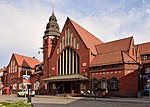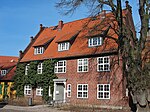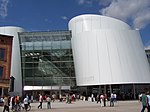Siege of Stralsund (1711–1715)

The siege of Stralsund was a battle during the Great Northern War. The Swedish Empire defended her Swedish Pomeranian port of Stralsund against a coalition of Denmark-Norway, the Electorate of Saxony and the Tsardom of Russia, which was joined by the Kingdom of Prussia during the siege. A first attempt to take Stralsund was made in 1711, when the allies closed in on the town. Swedish relief forced the coalition to withdraw from the fortifications, whereupon the besieging armies drew a wider ring along the lines of the Recknitz and Peene rivers. Magnus Stenbock's victory at Gadebusch for a short time distracted the allies, but after Stenbock's pursuit and subsequent defeat, Prussia as well as Hanover, ruled in personal union with Great Britain, joined the anti-Swedish alliance. The allies agreed that Denmark should cede her claims to Bremen-Verden to Hanover, and in turn Denmark was promised the northern parts of Swedish Pomerania with Stralsund, while the southern parts were to become Prussian. In 1714, Charles XII of Sweden rode to Stralsund from his Turkish exile to lead the defense in person. From 12 July to 24 December 1715, the allies sieged the town and eventually forced its surrender. Charles XII escaped to Sweden. Stralsund remained under Danish control until it was returned to Sweden by the Treaty of Frederiksborg.
Excerpt from the Wikipedia article Siege of Stralsund (1711–1715) (License: CC BY-SA 3.0, Authors, Images).Siege of Stralsund (1711–1715)
Knöchelsöhren,
Geographical coordinates (GPS) Address Nearby Places Show on map
Geographical coordinates (GPS)
| Latitude | Longitude |
|---|---|
| N 54.3 ° | E 13.083333333333 ° |
Address
Knöchelsöhren
Knöchelsöhren
18437 , Triebseer
Mecklenburg-Vorpommern, Germany
Open on Google Maps










